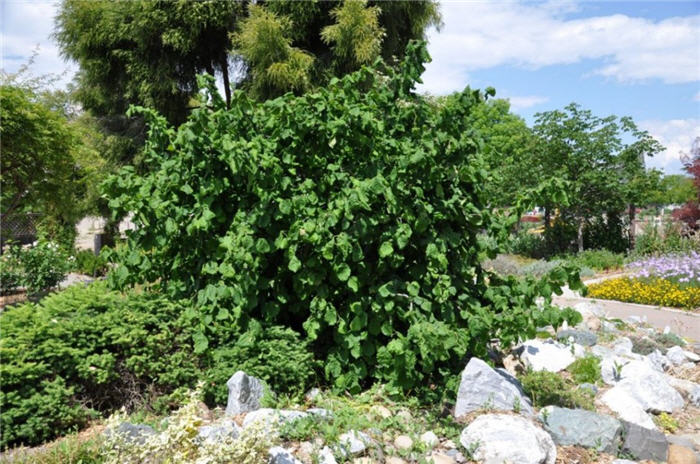| Botanical Name: Corylus avellana 'Contorta' | |
| Common Name: Harry Lauder's Walking-stick |

-
Anatomy
-
Culture
-
Design
Plant Type
Shrub
Height Range
6-12'
Flower Color
Yellow
Flower Season
Winter, Spring
Leaf Color
Light Green
Bark Color
Brown
Fruit Color
n/a
Fruit Season
n/a
Sun
Full, Half
Water
Medium, Extra in Summer
Growth Rate
Moderate
Soil Type
Clay, Loam
Soil Condition
Average, Rich, Well-drained, Moist
Soil pH
Neutral
Adverse Factors
n/a
Design Styles
Formal, Japanese
Accenting Features
Silhouette, Specimen, Unusual Shape
Seasonal Interest
Winter
Location Uses
Entry, Shrub Border, Foundation, Walls / Fences
Special Uses
Cut Flowers, Screen, Small Spaces
Attracts Wildlife
n/a
Information by: Stephanie Duer
Photographer:
Photographer:
-
Description
-
Notes
This unique, deciduous shrub has interesting, gnarly, heavily twisted branches; even the leaves are oddly contorted. Foliage is a medium green, turning yellow in the autumn. Showy greenish-yellow catkins appear in winter. Size is variable, depending on the branching patterns, but eventually may reach 8 to 10 feet tall and wide. An interesting specimen, maybe it's best use is as a winter accent, when the twisted and curled branches are most visible.
Grow in well drained, loamy soil in full sun to part shade. This cultivar is usually sold in a grafted form, so root suckers should be promptly removed since they will not exhibit the characteristic contorted form. Periodic thinning may help accentuate the contorted form; for instructions in selective pruning, see the Guides. Do not shear! If you thin it out, keep the stems as they are wonderful structural interest in floral arrangements.